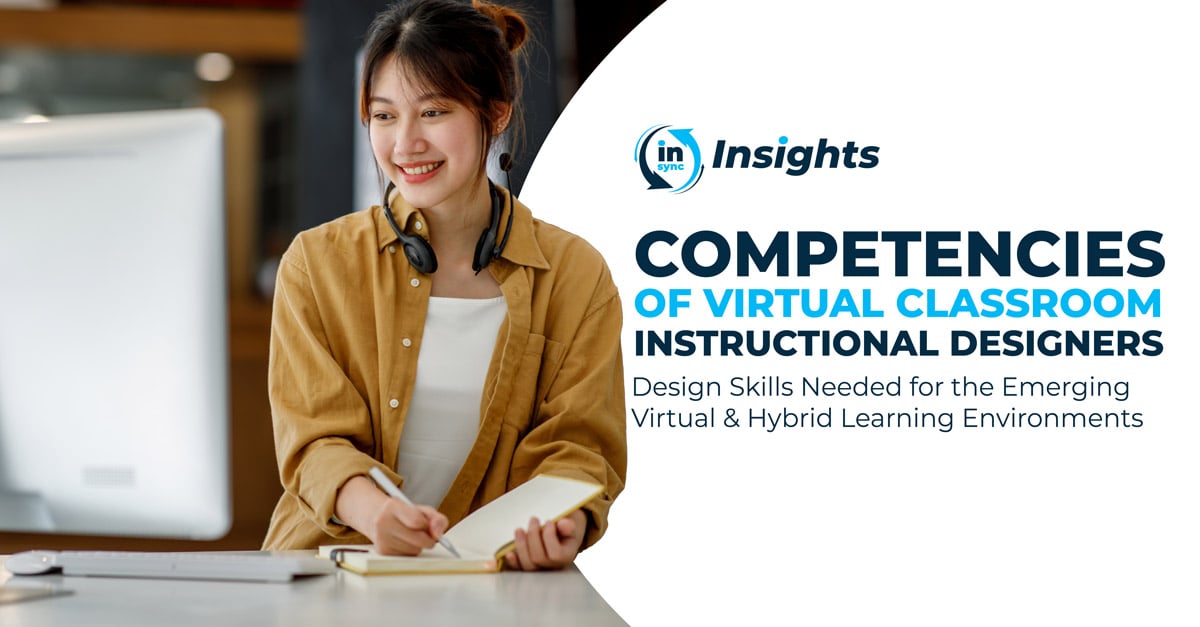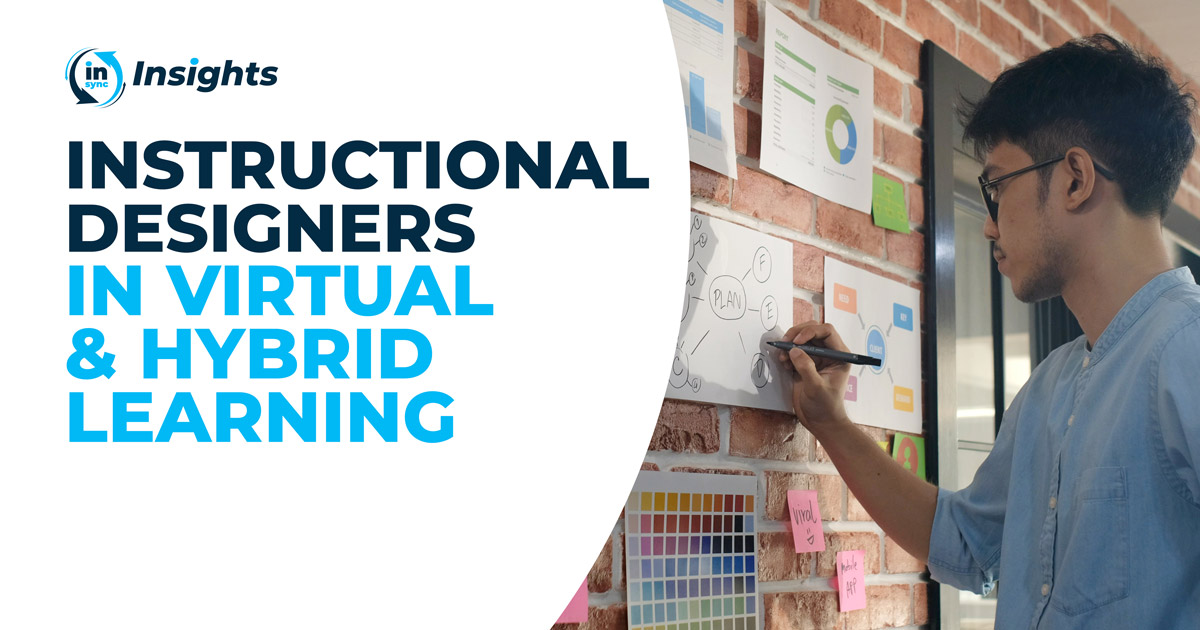Instructional Designers in Virtual and Hybrid Learning
The Importance of Specialized Skills for Instructional Designers in Virtual Learning Environments In the rapidly changing landscape of training,...
4 min read
 Jennifer Hofmann
:
Sep 18, 2023 8:09:00 AM
Jennifer Hofmann
:
Sep 18, 2023 8:09:00 AM

As remote work becomes more common, virtual training is now a key part of learning and development in organizations globally.
As virtual and hybrid learning environments become more common, instructional designers' role grows in importance. They create engaging, effective learning experiences accessible to a wide range of learners. This requires not only technical expertise but also a deep understanding of how people learn.

Virtual classroom instructional designers are the backbone of these training sessions as they design and create content that can engage, educate, and motivate learners.
Designing effective content for virtual and hybrid learning environments requires specialized skills and expertise. In this post, we explore the competencies that virtual classroom instructional designers need to possess to create active and sustainable virtual learning experiences.
Experiencing what it's like to be a learner in virtual and hybrid learning environments is crucial for instructional designers. This firsthand experience provides invaluable insights into the challenges and opportunities that learners face in these settings. It allows designers to understand the learner's perspective, including how they interact with the content, navigate the technology, and engage with others in the virtual space.
This understanding can then inform the design process, helping to create more effective, engaging, and user-friendly learning experiences. Also, by experiencing the learning journey themselves, designers can identify potential areas of improvement and innovation, ensuring that their designs are not only theoretically sound but also practical and relevant. Ultimately, being a learner in a virtual or hybrid environment enables instructional designers to empathize with their audience, which is key to creating impactful learning experiences.
The following competencies - Analytical Instructional Design, Brain-based Design Principles, Creative Activities for Hybrid Learning, Microlearning Materials Design, Technology Adaptability and Flexibility, and Attention to Detail - collectively form the foundation of effective instructional design in the digital age.
Analytical Instructional Design: To create effective virtual learning experiences, designers must possess analytical instructional design skills to engage learners intellectually, emotionally, and environmentally. InSync's InQuire Engagement Framework is a great example of analytical instructional design that helps instructional designers design compelling content. The InQuire Engagement Framework puts the learner at the center of the design, incorporates gamification, and encourages collaborative learning within the virtual environment.
Brain-based Design Principles: Designers need to apply brain-based design principles to create content that is memorable and has a lasting impact on learners. Brain-based design principles is an instructional design model centered around creating an environment that positively affects the brain's ability to learn. InSync's eBook, Virtual Learning is Real Learning: 5 Brain-Based Activities for the Virtual Classroom, is a great resource to understand how to apply these principles in virtual classrooms.
Creative Activities for Hybrid Learning: Hybrid learning is complicated, and designers need to create content that accommodates all audiences. Designers must create creative and engaging activities that can be adapted to different environments. Activities such as polls, breakout discussions, and quizzes are great examples of interactive activities that work well in both physical and virtual environments. Designers must also create training materials that can be easily accessed by facilitators and learners from different locations.
These competencies, when effectively integrated, foster an engaging, accessible, and memorable learning experience. Designers must not only aim to keep pace with the rapidly evolving digital landscape but also strive to be versatile, adaptable, and detail-oriented, creating content that resonates with diverse learners. Ultimately, the goal is to design a dynamic learning environment that meets the needs of learners and facilitators alike, promoting continuous learning and improvement in the digital age.
In the ever-evolving learning landscape, the role of the virtual classroom instructional designer has expanded beyond traditional boundaries. They are no longer limited to just curriculum development, but are pivotal in shaping the overall learner experience in virtual and hybrid environments.
Proficiency in technical aspects like user traditional instructional design is critical. However, it's the softer skills that truly differentiate an effective instructional designer. Creativity enables them to create engaging and interactive learning modules, while their meticulous attention to detail ensures a seamless and error-free user experience.
The successful virtual classroom instructional designer is a blend of a technical expert, a creative artist, and an empathetic educator. Their role is vital in fostering impactful learning experiences that not only facilitate skill acquisition but also contribute to the overall growth and development of learners. As virtual and hybrid learning continue to redefine the educational landscape, the role of the instructional designer will only become more significant, providing value to organizations and learners alike.
Continue your personal learning journey with InSync Training by becoming a Master Virtual Classroom Designer and learn to:
Earn your Virtual Classroom Design Certification today! Sign up for InSync's Virtual Classroom Design Mastery certificate program and become an expert in fostering engagement and creating dynamic virtual learning experiences. Take the next step in shaping impactful virtual classrooms.

The Importance of Specialized Skills for Instructional Designers in Virtual Learning Environments In the rapidly changing landscape of training,...

5 Recommendations to Integrate Rich Additional Content into the Virtual Classroom, and What Virtual Learning Experts® Need to KnowThis is part of an...

5 Recommendations to Evaluate Hybrid and Virtual Learning, and What Virtual Learning Experts® Need to Know. This is part of an ongoing column by ...